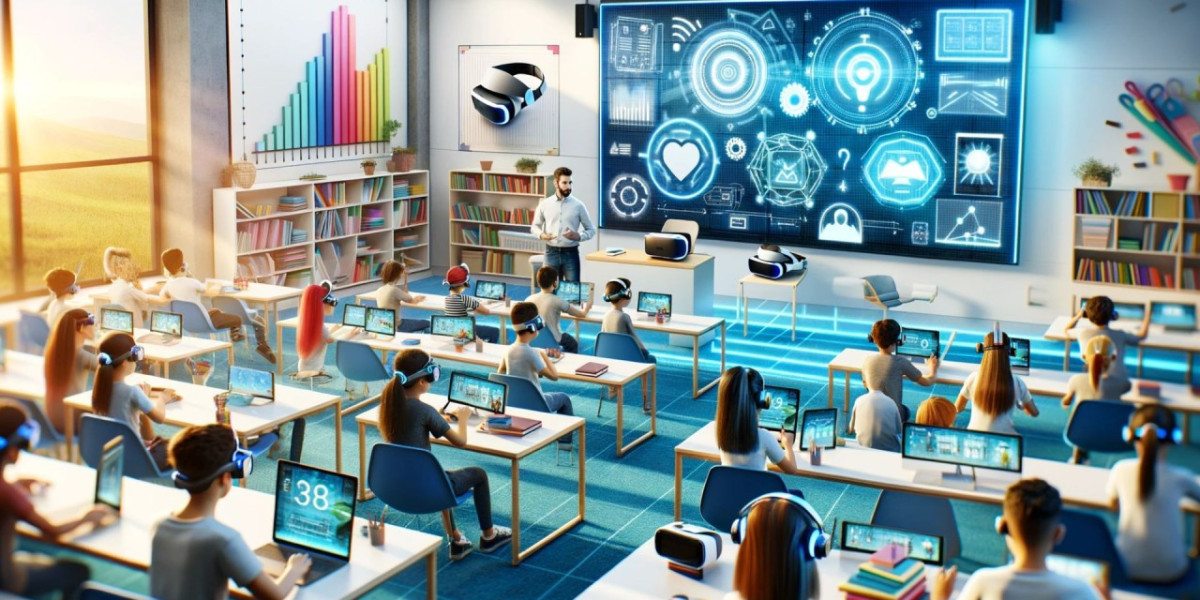As artificial intelligence (AI) continues to advance rapidly, it is transforming numerous aspects of our lives, including education. From adaptive learning platforms to virtual tutors, AI is already playing a supporting role in the classroom. However, this progress raises an important question: Will AI replace teachers in the classroom entirely? In this article, we will explore the potential benefits and limitations of AI in education, the unique roles teachers play that AI cannot replace, and the likely future relationship between AI and educators.
Understanding AI’s Role in Education Today
AI is already making an impact in the classroom by offering personalized and adaptive learning solutions. AI-powered educational tools can assess a student’s learning style, pace, and areas of difficulty, delivering customized content tailored to their individual needs. For example, platforms like DreamBox and Khan Academy use machine learning algorithms to provide students with tailored math and reading lessons, adapting in real-time to each student’s responses and skill level.
As these tools become more sophisticated, some question "Can AI replace teachers?" However, while AI can support and enhance education, it is still a tool rather than a replacement for human educators. Teachers provide guidance, emotional support, mentorship, and an understanding of human nuance that AI, in its current form, cannot replicate.
The Benefits of AI in the Classroom
AI brings several benefits to education, making it a valuable resource for both teachers and students:
1. Personalized Learning and Adaptability
One of the most significant advantages of AI in education is its ability to create personalized learning experiences. Adaptive learning technology uses algorithms to assess student performance and adjust lessons accordingly. This allows students to learn at their own pace, which can be especially beneficial for students who may struggle in a traditional, one-size-fits-all classroom setting.
2. Instant Feedback and Assessment
AI-driven tools can provide immediate feedback to students, allowing them to correct mistakes in real time and reinforce their learning. This instant feedback loop is especially valuable in subjects like math and language, where continuous practice and correction are essential for mastering concepts. Tools like Socratic by Google and Grammarly offer real-time feedback, helping students improve their skills faster than traditional grading methods.
3. Streamlining Administrative Tasks
AI can help automate administrative tasks, freeing up time for teachers to focus on student engagement and instruction. Tasks such as grading, attendance tracking, and report generation can be handled by AI systems, allowing teachers to dedicate more time to personalized instruction and building relationships with students.
For example, AI tools like Google Classroom automate the grading of multiple-choice assessments and allow for easy tracking of student performance. This automation reduces teacher workloads and enhances their ability to focus on meaningful teaching.
The Limitations of AI in Education
Despite its advantages, AI has limitations that prevent it from fully replacing teachers. These limitations highlight the unique qualities and skills that human teachers bring to the classroom.
1. Lack of Emotional Intelligence and Human Connection
One of the primary limitations of AI in education is its inability to provide emotional intelligence, empathy, and human connection. Teachers offer support, encouragement, and understanding that AI cannot replicate. Students often require emotional guidance, especially when facing academic challenges, and human teachers are better equipped to provide this support.
Additionally, building rapport and understanding students' individual personalities, backgrounds, and social dynamics are essential parts of effective teaching. AI lacks the capacity for emotional nuance, which is crucial in building trusting teacher-student relationships that foster a supportive learning environment.
2. Limited Critical Thinking and Creativity
While AI excels at handling data-driven tasks, it struggles with creativity, critical thinking, and complex problem-solving. Teachers encourage students to think critically, ask questions, and develop original ideas—skills that are essential for intellectual growth and cannot be easily fostered by an AI system.
Teachers often inspire students through creative lesson plans, discussions, and hands-on activities that challenge students to think beyond standard answers. These experiences cultivate a love for learning and a curiosity that AI algorithms cannot replicate.
3. Navigating Social and Ethical Challenges
Classrooms are dynamic environments where social interactions and ethical issues frequently arise. Teachers help students navigate social situations, manage conflicts, and understand ethical considerations. They serve as role models, teaching students values like respect, cooperation, and integrity, which are essential for personal development.
AI lacks the contextual awareness required to handle these complex social and ethical situations. For example, in cases of bullying or emotional distress, a human teacher can intervene with compassion and discretion, something AI cannot accomplish with the same effectiveness.
The Future of AI and Teachers: Collaboration, Not Replacement
Rather than replacing teachers, AI is more likely to serve as a supportive tool that enhances the teaching and learning experience. The future of education will likely involve a collaborative relationship between AI and educators, where each contributes unique strengths to create a well-rounded learning environment.
1. AI as an Instructional Aid
AI can assist teachers in creating customized lesson plans, managing large classrooms, and identifying students who need additional help. By providing teachers with data-driven insights, AI can help them make informed decisions about how to best support each student.
For instance, AI can analyze student performance data and alert teachers if a student is falling behind, allowing teachers to intervene early. AI may also provide suggestions for supplementary resources or activities that can help students master challenging topics.
2. Enabling Teachers to Focus on Higher-Order Skills
By automating administrative and repetitive tasks, AI frees up teachers to focus on higher-order instructional skills that require human insight, creativity, and empathy. With AI handling tasks like grading and attendance, teachers can spend more time on lesson planning, classroom discussions, and one-on-one interactions with students.
3. Supporting Lifelong Learning
AI can play a crucial role in lifelong learning by making education more accessible and flexible. In a world where skills need to be continually updated, AI-powered learning platforms allow students to pursue personalized learning at any age. Teachers, however, remain essential in guiding students’ learning journeys, particularly in the formative years.
Conclusion: Teachers and AI—Partners in Education
While AI has transformed education by offering tools for personalized learning, real-time feedback, and administrative efficiency, it is unlikely to replace teachers. The value of teachers lies not only in their ability to instruct but also in their capacity for empathy, guidance, and inspiration—qualities that AI cannot replicate. Teachers help students develop critical thinking, creativity, and social skills that are essential for life beyond the classroom.
In the future, AI and teachers will likely work together to create a more dynamic and effective educational experience. With AI handling certain tasks, teachers will have more time to focus on providing mentorship, fostering a supportive learning environment, and inspiring students to reach their full potential. As we continue to integrate AI into education, it is essential to view it as a valuable tool that complements, rather than replaces, the irreplaceable human elements that teachers bring to the classroom.







